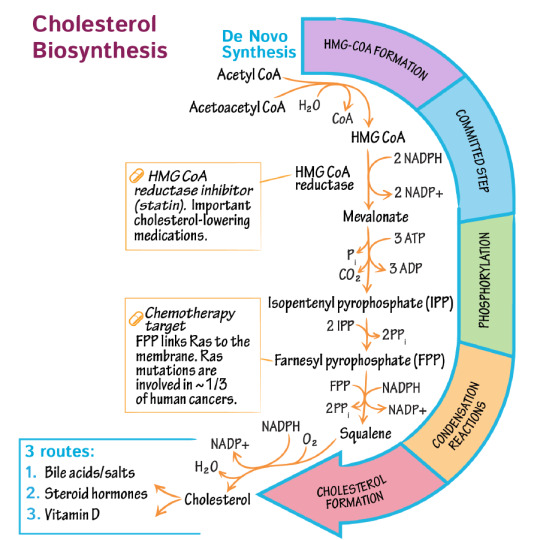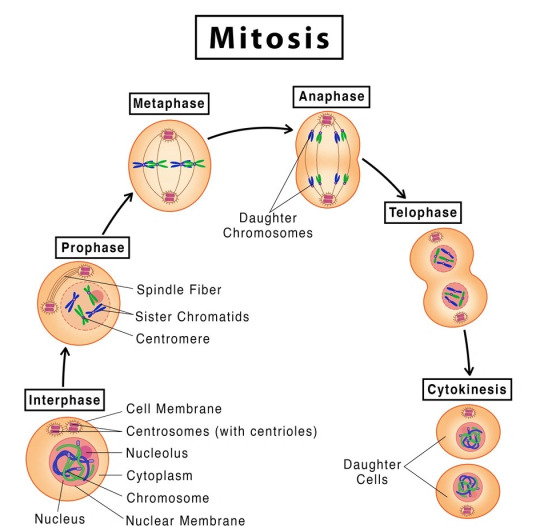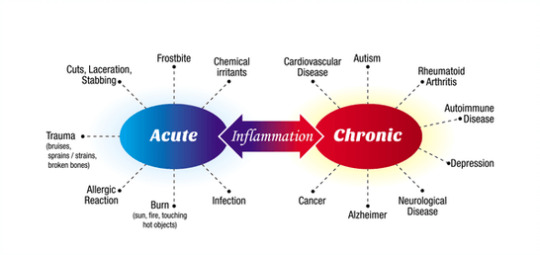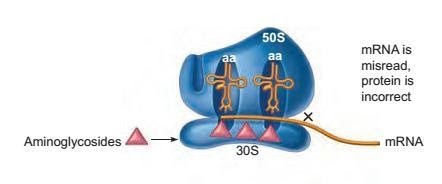Text
OXIDATIVE AND NON-OXIDATIVE DEAMINATION
"🔔 New Post Alert! 🚀✨ Exciting content just dropped on our website! 📝 Dive into the latest insights, tips, and inspiration. Click the link in our bio to stay ahead of the curve! 🌐💡 #NewPost #StayInformed #KnowledgeIsPower #microscopiaiwm"
INTRODUCTION:
The removal of amino group from the amino acid as ammonia (NH3) is called deamination.
A chemical reaction that is catalysed by the deaminase class of enzymes which results in the liberation of ammonia is called deamination and this liberated ammonia is used for urea synthesis.
These reactions occur in the liver and kidney of humans. In the kidney, the ammonia which is a result…

View On WordPress
#alpha-ketoglutarate#amide hydrolases.#Amino acid desulphhydrases#Amino acid hydrases#amino acids#“collection centre”#deamination#deamination occurs in#desulphahydrases#DIFFERENCE BETWEEN OXIDATIVE AND NON-OXIDATIVE DEAMINATION#examples of non- oxidative deamination#Fate of D-amino acids#fermentation#Glutamate#Glutamate dehydrogenase#Glutamate dehydrogenase (GDH)#Glutamate dehydrogenase and its roles in the process of oxidative deamination#histidase#iminoglutarate#lyase#metabolism#MicroScopia IWM#mitochondrial enzyme#monoamine oxidase#msiwm#non-oxidative#non-oxidative deamination#non-oxidative deamination reaction#oxidative#oxidative deamination
0 notes
Text
Cholesterol: Sources, Structure and Biosynthesis.
Elevate your online experience with our latest notes on topic, Cholesterol: Sources, Structure and Biosynthesis on our website https://microscopiaiwm.wordpress.com/ . "Unlocking knowledge one post at a time!
follow microscopiaiwm
#microscopiaiwm
Introduction
Cholesterol is an extremely important sterol in the tissues of animals. It is an organic molecule and a type of lipid. It is a fat-like substance, which is waxy in texture, and found in all the cells of our body, as it is essential for carrying out many functions such as synthesis of hormones, synthesis of vitamin D and also acts as an integral structural component of the membranes…

View On WordPress
#3-epoxide#aceto-acetyl CoA#biochemistry notes#biosynthesis of cholesterol#biosynthesis of isoprenoid units#biosynthesis of lanosterol#biosynthesis of melanovate#biosynthesis of squalene#cholesterol#Cholesterol formation#cholesterol notes#fatty acid#firmation of lanosterol#HMG-CoA#isoprenoid#lanosterol#lanosterol cyclase#metabolism#metabolism notes#mevalonate#mevalonic acid#MicroScopia IWM#oxidosqualene#sources of cholesterol#squalene#squalene-2#statin#steroid hormones#sterol#sterols in animals
0 notes
Text
MITOSIS- its Occurrence, Stages and Significance.
Unlocking knowledge one post at a time! Check out our latest notes on www.microscopiaiwm.com – a treasure trove of insights, ideas, and inspiration. Dive in, explore, and let the journey of discovery begin! 📚
INTRODUCTION:
Mitosis is a type of cell division that takes place in living organisms and it is commonly defined as the process of duplication of chromosomes in eukaryotic cells and distributed during cell division.
The process where a single cell divides resulting in two identical cells, each resulted cell contains the same number of chromosomes and…

View On WordPress
#anaphase#asexual reproduction#cell cycle#cell cycle stages#cell division#cell plate#chromosome#cleavage furrow#contractile ring#cytokinesis#daughter cell#daughter cells#division of cytoplasm#division of nucleus#dna#DNA double#duplication of chromosome#fragmoplast#genetics#germ cells#homologous chromosome#homologous recombination#homologous recombination repair#karyokinesis#kinetochore#kinetoplast#meiosis#metaphase#MicroScopia IWM#mitos
3 notes
·
View notes
Text
Metamorphosis and its type
Unlocking knowledge one post at a time! check out our latest notes on topic-METAMORPHOSIS AND ITS TYPES on our website www.microscopiaiwm.com. A treasure trove of insights, ideas, and inspiration. Dive in, explore, and let the journey of discovery begin!
Metamorphosis is the phenomenon of dramatic developmental changes in which an immature organism turns into a sexually mature form. In this process, large proportions of structural changes occur in such a way that its younger form and older form are unrecognizable. These changes are initiated by endocrine factors and few hormones that will possibly affect every cell in the developing…

View On WordPress
#adult#complete metamorphosis#csirnet#dev. bio#developemental biology#developmental biology#developmental changes#developmental metamorphosis#developmental stages#direct developers#ecological metamorphosis#exoskeleton#heterochomy#hypermorphosis#incomplete metamorphosis#indirect developers#insect development#juvenile#larva#life science&039;#lifesciences#metamorphosis#metamorphosis and its types#microbiology#microscopia#microscopiaiwm#miniature adult#msiwm#neoteny#nymph
0 notes
Text
Citric acid production and applications of submerged fermentation
Citric acid production and applications of submerged fermentation
Submerged fermentation is a type of fermentation in which the microorganisms are suspended in a liquid medium. The liquid medium also contains various other nutrients and growth factors in the necessary proportions in a dissolved or a particulate solids form.
The main application of submerged fermentation technique is in the extraction of metabolites (secondary metabolites) which are needed to…
View On WordPress
#advantages of submerged fermenta#applications of submerged fermentation#Citric acid production#fermentation#LIMITATIONS OF submerged fermentation#Microorganisms used for the production of citric acid#MicroScopia IWM#msiwm#SUBMERGED FERMENTATION#Submerged fermentation process#Type of bioreactor used for submerged fermentation:#types of fermentation#Uses of citric acid
0 notes
Text
FLUORESCENCE MICROSCOPY
Fluorescence microscopy is an essential tool in molecular and cellular biology. It is a technique that allows one to study and visualize the cellular structures and dynamics of tissues and organelles, and macromolecular assemblies inside the cell. It was devised in the early twentieth century by various scientists like Köhler, Lehmann, Reichert and others.
The wide utilization of fluorescent…

View On WordPress
#applications of fluorescence microscope#components of fluorescence microscope#Dichroic mirror#Exciter filte#fluorescence microscope#FLUORESCENCE MICROSCOPY#fluorochromes#fluorophore#instrumentation of fluorescence microscope#mercury arc lamp#microscope#MicroScopia IWM#MICROSCOPY#msiwm#principle of fluorescence microscope
0 notes
Text
Vaccine
QUIZ ON VACCINE
Que 1. Vaccine is prepared by
a. weakened microorganism b. toxins
c. Surface protein d. all of the above
Que 2. The term vaccine and vaccination are coined by-
a. Edward jenner b. Louis Pasture
c. Robert Koch d. Alexander Fleming
Que 3.…

View On WordPress
0 notes
Text
Inflammation
Introduction
Inflammation is part of the complex biological reaction of the tissues of the body to harmful stimuli, such as bacteria, damaged cells or irritants, and is a defensive reaction involving immune cells, blood vessels and molecular mediators.
Inflammation has the purpose of removing the initial cause of cell injury, clearing necrotic cells and damaged tissues from the initial insult…

View On WordPress
#Acute inflammation#ADAPTIVE IMMUNITY#biological reaction#Causes that lead to inflammation in the body:#Chronic inflammation#Corticosteroids#immunity#inflammation#Inflammation symptoms#inflammatory responses#INNATE IMMUNITY#MicroScopia IWM#Treatment of Inflammation#types of inflammation
0 notes
Text
Research methodology
By- Ezhuthachan Mithu Mohanan, ( MSIWM043 )
Research methodology: The method of conducting research, by formulating problems, finding objectives, presenting result is all the crucial steps in any research. Sources of data and population consideration, ethical values, sample determination, methods executing plays a vital role before undertaking the research proposal.
Objectives
Obtaining novel…

View On WordPress
#alternative hypothesis#data analysis#Formulation of hypothesis:#Identifying Research#literature review&039;#MicroScopia IWM#null hypothesis#objectives of Research methodology#process of Research methodology#research#Research design#Research methodology#testing hypothesis#types of Research reports
0 notes
Text
Corona Virus
QUIZ ON CORONA VIRUS
Que 1: Latin word “corona” means
a. Crown b. Lethal
c. Spherical d. Contagious
Que 2: Coronavirus belongs to _______ subfamily-
a. Avulavirinae b. Comovirinae
c.…

View On WordPress
#corona virus#daily quiz#mars#notes on corona virus#question answer on corona virus#quiz#quiz on corona virus#sars
0 notes
Text
Agglutination Reactions
Agglutination is defined as the antigen-antibody reaction in which antibodies cross-link particulate antigens resulting in the visible clumping of particles. Antibodies that show such reactions are called agglutinins.
Agglutination reactions work on the principle of cross-linking of the polyvalent antigens. Following are the advantages of agglutination reactions:
easy to perform require no…

View On WordPress
#Active agglutination#Agglutination Reactions#agglutinins#antigen-antibody reaction#Bacterial Agglutination#Cellular and Molecular Immunology by Abul K. Abbas – 7thEdition#Hemagglutination#immunology#Kuby Immunology – 5thEdition#microbial lexicon#Types of agglutination reactions
0 notes
Text
Atopy
Synonym: Localized Anaphylaxis
Introduction:
Atopy is defined as the tendency of an individual to produce IgE antibodies in response to various environmental antigens and thus develop strong immediate hypersensitivity (allergic) responses. Individuals with allergies to environmental antigens (e.g., pollen, house dust) are atopic.
Localized anaphylaxis involves reactions limited to a specific…
View On WordPress
#Allergic Rhinitis#ANTIBODIES (IMMUNOGLOBULINS)#asthma#atopic dermatitis (eczema)#atopy#Cellular and Molecular Immunology by Abul K. Abbas – 7thEdition#food allergies#hay fever#hypersensitivity#IgE antibodies#immunology#Kuby Immunology – 5thEdition.#microbial lexicon
1 note
·
View note
Text
Antigen presenting cells
Introduction
The population of specialized cells:
to capture microbial and other antigens,display MHC complexes in association with these peptide fragments of protein antigens on its surface to lymphocytes, andprovide signals that stimulate the proliferation and differentiation of the lymphocytes (co-stimulatory signal) are known as the antigen-presenting cells (APCs).
APCs are…
View On WordPress
#ANTIGEN PRESENTING CELLS#Antigen-Presenting Cells for Effector T -Lymphocytes#antigens#apc cells#dendritic cells#Follicular Dendritic Cells#lymphocytes#macrophages#MHC Molecules.#microbial lexicon#types of antigen presenting cells
0 notes
Text
Apoptosis
Synonym: Programmed cell death
Pronunciation: ah-poh-toh’-sis: Greek, (1) apo- away from and (2) ptosis, a falling or dropping
‘Apoptosis’ has been derived from a Greek word that describes the falling of the leaves from a tree or petals from a flower. This term was coined to differentiate this form of programmed cell death from the accidental cell deaths caused by inflammation or injury…

View On WordPress
#apoptosis#event of apoptosis#genes involved in apoptosis#microbial lexicon#Necrosis#programmed cell death
0 notes
Text
Aminoglycosides
Introduction:
Aminoglycosides comprise a complex group of drugs derived from soil Actinomycetes in the genera Streptomyces and Micromonospora that impairs ribosome function and has antibiotic potential.
Examples includes Streptomycin, gentamicin, tobramycin, and, amikacin.
Mode of Action:
This complex group of drugs inserts itself on sites on the 30S ribosomal subunit of the prokaryotes and…

View On WordPress
#Actinomycetes#Aminoglycosides#antibiotics#Drug toxicity of aminoglycosides#drugs#microbial lexicon#mode of action of aminoglycosides#streptomycin#structure of aminoglycosides#Subgroups and Uses of Aminoglycosides#Talaros Foundations in Microbiology – 8thEdition
0 notes
Text
Enzyme Inhibition
BY- Ezhuthachan Mithu Mohan (MSIWM043)
Enzyme Inhibitor: Enzyme inhibitor decreases the rate of reaction by binding to the substrate or decreasing the turnover number. It can be organic or inorganic.
The process which decreases the rate of reaction, by either binding to enzymes or making configurationally changes is known as enzyme inhibition.
Allosteric Inhibition:
When enzyme poses…

View On WordPress
#Allosteric Inhibition:#Competitive inhibitor#enzyme#Enzyme Inhibition#Enzyme Inhibitor#Irreversible inhibition#Noncompetitive inhibitor#Reversible Inhibition#suicide inhibitor#Uncompetitive inhibitor
0 notes
Text
PLANT DNA EXTRACTION PRACTICAL PROTOCOL
PLANT DNA EXTRACTION PRACTICAL PROTOCOL
By: N. Shreya Mohan (MSIWM042)
AIM– To isolate the DNA from a plant sample
THEORY– Plant extractions for DNA is considered one of the tedious methods for high quality DNA isolations. Unlike animal tissues, which have the same tissue type in different species, plant tissues structural biomolecules and metabolites keep changing. Polysaccharides and polyphenols are two very special class…

View On WordPress
0 notes